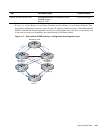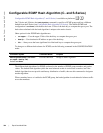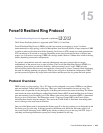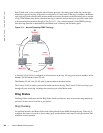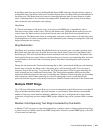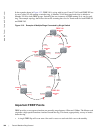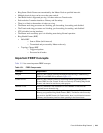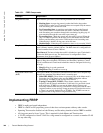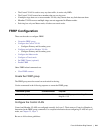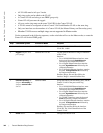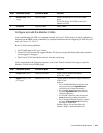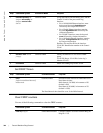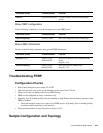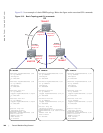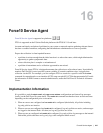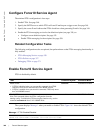
Force10 Resilient Ring Protocol | 341
• The Control VLAN is used to carry any data traffic; it carries only RHFs.
• The Control VLAN cannot have members that are not ring ports.
• If multiple rings share one or more member VLANs, they cannot share any links between them.
• Member VLANs across multiple rings are not supported in Master nodes.
• Each ring has only one Master node; all others are transit nodes.
FRRP Configuration
These are the tasks to configure FRRP.
• Create the FRRP group
• Configure the Control VLAN
• Configure Primary and Secondary ports
• Configure and add the Member VLANs
• Configure Primary and Secondary ports
• Configure the Master node
• Configure a Transit node
• Set FRRP Timers (optional)
• Enable FRRP
Other FRRP related commands are:
• Clear FRRP counters
Create the FRRP group
The FRRP group must be created on each switch in the ring.
Use the commands in the following sequence to create the FRRP group.
Configure the Control VLAN
Control and Member VLANS are configured normally for Layer 2. Their status as Control or Member is
determined at the FRRP group commands. For complete information about configuring VLANS in Layer 2
mode, see Chapter 25, Layer 2.
Be sure to follow these guidelines:
Command Syntax Command Mode Purpose
protocol frrp ring-id CONFIGURATION Create the FRRP group with this Ring ID
Ring ID: 1-255



